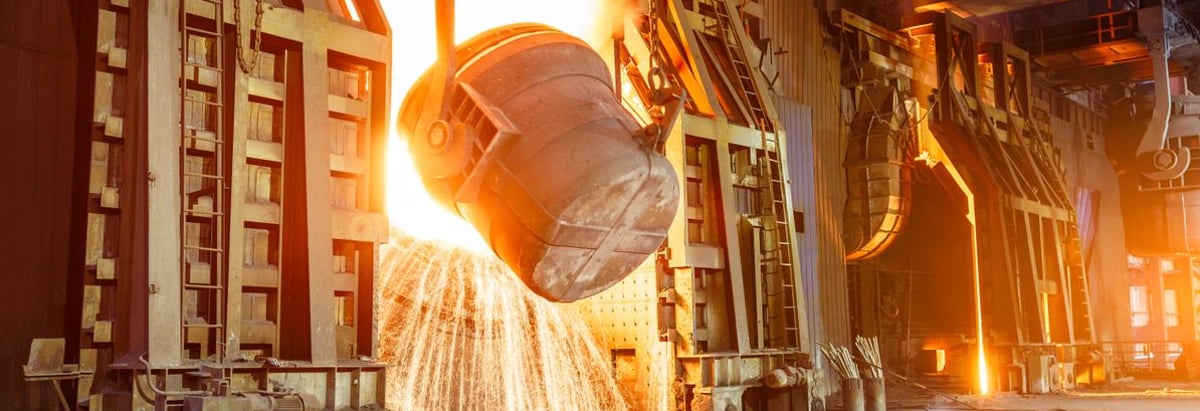Stock Analysis
- China
- /
- Metals and Mining
- /
- SHSE:601011
Is Baotailong New Materials (SHSE:601011) Using Debt Sensibly?

Legendary fund manager Li Lu (who Charlie Munger backed) once said, 'The biggest investment risk is not the volatility of prices, but whether you will suffer a permanent loss of capital.' It's only natural to consider a company's balance sheet when you examine how risky it is, since debt is often involved when a business collapses. As with many other companies Baotailong New Materials Co., Ltd. (SHSE:601011) makes use of debt. But the real question is whether this debt is making the company risky.
Why Does Debt Bring Risk?
Generally speaking, debt only becomes a real problem when a company can't easily pay it off, either by raising capital or with its own cash flow. In the worst case scenario, a company can go bankrupt if it cannot pay its creditors. However, a more frequent (but still costly) occurrence is where a company must issue shares at bargain-basement prices, permanently diluting shareholders, just to shore up its balance sheet. Of course, the upside of debt is that it often represents cheap capital, especially when it replaces dilution in a company with the ability to reinvest at high rates of return. The first thing to do when considering how much debt a business uses is to look at its cash and debt together.
Check out our latest analysis for Baotailong New Materials
What Is Baotailong New Materials's Debt?
The image below, which you can click on for greater detail, shows that at September 2024 Baotailong New Materials had debt of CN¥3.05b, up from CN¥2.55b in one year. However, it also had CN¥142.5m in cash, and so its net debt is CN¥2.90b.
How Healthy Is Baotailong New Materials' Balance Sheet?
The latest balance sheet data shows that Baotailong New Materials had liabilities of CN¥4.72b due within a year, and liabilities of CN¥1.01b falling due after that. Offsetting this, it had CN¥142.5m in cash and CN¥168.5m in receivables that were due within 12 months. So it has liabilities totalling CN¥5.42b more than its cash and near-term receivables, combined.
When you consider that this deficiency exceeds the company's CN¥5.29b market capitalization, you might well be inclined to review the balance sheet intently. In the scenario where the company had to clean up its balance sheet quickly, it seems likely shareholders would suffer extensive dilution. The balance sheet is clearly the area to focus on when you are analysing debt. But it is Baotailong New Materials's earnings that will influence how the balance sheet holds up in the future. So when considering debt, it's definitely worth looking at the earnings trend. Click here for an interactive snapshot.
In the last year Baotailong New Materials had a loss before interest and tax, and actually shrunk its revenue by 37%, to CN¥2.3b. To be frank that doesn't bode well.
Caveat Emptor
Not only did Baotailong New Materials's revenue slip over the last twelve months, but it also produced negative earnings before interest and tax (EBIT). Indeed, it lost CN¥407m at the EBIT level. When we look at that alongside the significant liabilities, we're not particularly confident about the company. It would need to improve its operations quickly for us to be interested in it. Not least because it had negative free cash flow of CN¥136m over the last twelve months. That means it's on the risky side of things. When analysing debt levels, the balance sheet is the obvious place to start. But ultimately, every company can contain risks that exist outside of the balance sheet. For example - Baotailong New Materials has 2 warning signs we think you should be aware of.
If, after all that, you're more interested in a fast growing company with a rock-solid balance sheet, then check out our list of net cash growth stocks without delay.
Valuation is complex, but we're here to simplify it.
Discover if Baotailong New Materials might be undervalued or overvalued with our detailed analysis, featuring fair value estimates, potential risks, dividends, insider trades, and its financial condition.
Access Free AnalysisHave feedback on this article? Concerned about the content? Get in touch with us directly. Alternatively, email editorial-team (at) simplywallst.com.
This article by Simply Wall St is general in nature. We provide commentary based on historical data and analyst forecasts only using an unbiased methodology and our articles are not intended to be financial advice. It does not constitute a recommendation to buy or sell any stock, and does not take account of your objectives, or your financial situation. We aim to bring you long-term focused analysis driven by fundamental data. Note that our analysis may not factor in the latest price-sensitive company announcements or qualitative material. Simply Wall St has no position in any stocks mentioned.
About SHSE:601011
Baotailong New Materials
Provides new material, coal-based clean energy, advanced carbon material, coal chemical, and other products in China.

